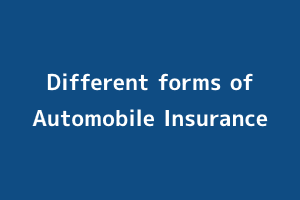Owners of motor vehicles in India have a variety of options for motor vehicle insurance. The primary goal is to safeguard car owners from harm and accidents.
Online motor insurance policies are based on coverage, which refers to the kind of insurance plan chosen and can be divided into the following categories:
- Full Coverage Insurance
- Liability insurance for third parties.
Full Coverage Insurance
Third-party responsibility and any costs incurred by the insured as a result of car theft or accident are both covered by a Full Coverage Insurance plan. The personal accident cover gives the policyholder the right to file a claim for compensation in the event of an accident that results in death or injury.
The advantage of purchasing this insurance policy is that the add-on plans or riders provide the policyholder with additional benefits without requiring the purchase of additional policies. Therefore, this kind of insurance plan gives security and safety to the policyholder for nearly any event that they may encounter.
covers what?
As the name implies, offers extensive coverage of every conceivable aspect linked to the covered vehicle and the policyholder’s interests. However, it is best to be aware of the various features that are protected by these insurance policies.
This insurance provides protection for many various facets, such as:
- Natural calamities, extreme weather, and fire damage.
- caused by an animal or a third party.
- Civil unrest, such as riots, resulted in damage to the car.
- Vandalism and theft.
Liability insurance for third parties
In India, it is required by law for all vehicle owners to carry third-party liability insurance. These insurance policies essentially defend the policyholder’s interests against losses brought on by the policyholder’s harm to a building or a person.
In a number of circumstances, it can be claimed that having third-party insurance reduces the policyholder’s risk and liability. This coverage is also suggested for cheap, old cars that are less expensive to fix.
The following are some of the terms frequently used to refer to third-party insurance:
- First-party: The person who purchased the insurance coverage or the policyholder
- Second-party: Insurance provider or insurer.
- Third-party: The person who makes a claim for the harm the first party has caused.
The policyholder is responsible for covering any losses or injuries sustained in the event of an accident with a third party. When an accident occurs, the policyholder must notify the insurance provider as soon as possible and make them aware of the circumstances.
Additionally, it is crucial to compile information on the accident and give the insurance the following specifics:
- Description of the accident, including the time and date.
- Information about insurance policies and those present at the scene of the accident.
- Describe any injuries the driver, passengers, or any damaged property or vehicles have suffered.
- Witness information.
- At the time of the accident, the weather, and visibility.
- Photographs of the accident scene’s evidence collection.
Get certification for your knowledge in the fundamentals of Computer functioning by clearing the Computer Certification Exam conducted by StudySection. After going through this Computer Certification Exam, you will be able to evaluate your basic knowledge of computers.




